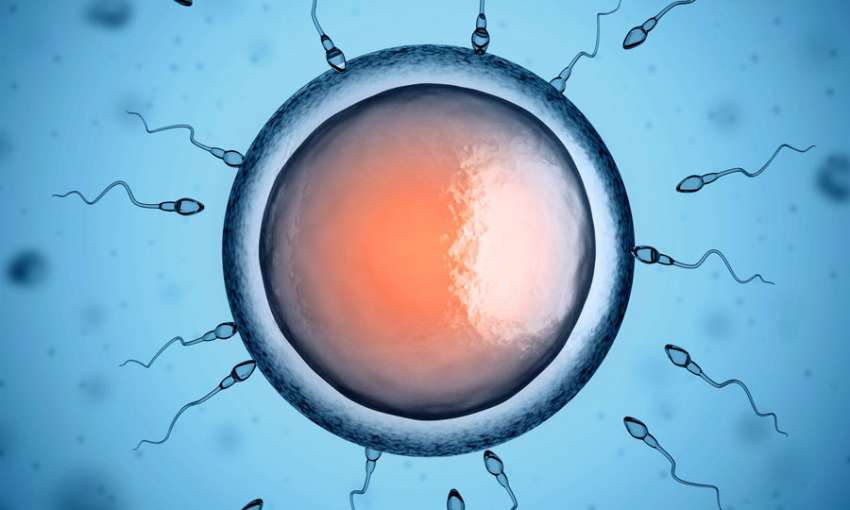Sperm count is one of the foremost important parameters for conception. The sperm count is often determined by doing a semen analysis. Semen analysis may be a detailed examination of all semen parameters, including sperm count, motility, sperm morphology, presence of infection, etc. it’s an important part of routine evaluation for all infertile couples seeking fertility solutions alongside other research.
Infertility prevalence
According to various studies, one in 8 women and one in 10 men have experienced infertility. Some studies have shown that in Indian couples seeking treatment, the malefactor is the cause of approximately 23%.
Understand the function of the male genital system.
The male genital system produces sperm, stores it, matures it, and transports it out of the body. Under the influence of the male steroid hormone – testosterone, sperm production occurs within the testicles.
From the testes, sperm travels to a structure called the epididymis, from the epididymis they again travel through tubes called ductus deferens. It joins with support glands called seminal vesicles and duct. In ejaculation, sperm mixes with fluid from the seminal vesicles and therefore the prostate to make semen. The semen travels through the urethra out of the body.
SEMEN PARAMETERS Normal Values
Semen volume (ml) 1.5ML
Sperm concentration (106 / ml) 15
Total number (106 / Squatting) 39
Total motility 40%
Progressive motility 32%
Normal forms 4%
Vitality (%) 58%
Semen parameters consistent with WHO criteria:
When there’s a discount in sperm count with or without other semen parameters in a minimum of 2 samples collected one to four weeks apart, then there’s difficulty in conception. Not just sperm count, total semen quality is employed to assess male fertility.
Sperm parameters that meet WHO values are often considered normozoospermic.
The reduced sperm count is named oligozoospermia.
No sperm are seen within the semen. it’s called azoospermia.
The increase in abnormal sperm is named teratozoospermia. Sperm morphology may be a very strong indicator of a man’s fertility potential that reflects a man’s reaction to environmental stress additionally to some genetic causes also. The evaluation of sperm morphology, although vital, is extremely subjective.
Sperm morphology also can assist in clinical deciding in choosing the treatment modality presumably to supply results.
Motility is assessed as fast progressive, slowly progressive, and non-progressive. Reduced motility: but 40% is asthenozoospermia. Reduced sperm motility may have a genetic cause or an undiagnosed medical condition. It also can flow from environmental factors and an unhealthy lifestyle.
Factors that affect sperm count
One of the foremost common causes of a coffee sperm count is a wrong or incomplete collection of a semen sample. that’s why most clinics recommend that two or more semen samples be verified before concluding a diagnosis. Clinical studies have seen differences due to the season in semen count in some patients. aside from this, lifestyle and occupation risks also affect sperm count. it’s also been observed that a lower sperm count is observed among IT professionals who work long hours with their laptops on their lap. This again is perhaps as a result of the heat around the testicles. Once an abnormal semen analysis has been reported, it’s important to understand the explanation for the abnormal report, and consequently, the treatment modality is often offered to the couple.
What might be the causes of abnormal semen parameters?
Abnormal semen parameters are often caused by any of the causes mentioned below
- Hormonal imbalances of key hormones like FSH and LH that cause a deficiency in testosterone production that manifests as low sperm counts
- Genetic causes like Klinefelter’s syndrome (47XXY), microdeletion of the Y chromosome.
- The presence of dilated veins around the testicle, which is named a varicocele, also can cause low sperm count and motility thanks to the increased temperature around the testicles.
- Testicular injury thanks to trauma, torsion.
- Orchitis/ infection of the testis may damage the testis or block the tubules carrying the sperms from the testis leading to decreased or zero sperm count.
- Exposure to Gonadotoxins like radiation during anticancer therapy, lifestyle toxicants resulting in damage of sperm-producing tissues within the testis resulting in abnormal semen parameters.
- Presence of Systemic diseases like liver failure, Chronic kidney failure also can lower your sperm count
- Obesity can cause hormonal changes that lower sperm count.
- High alcohol intake can adversely affect your sperm count. Adopting a healthy lifestyle with weight reduction and abstinence from alcohol and smoking can cause an improvement
- Smoking can affect the sperm count, motility and morphology by giving rise to oxidative free radicals which may damage testicular tissue
- Prior surgery like hernia repair, scrotal surgery can cause a discount in sperm parameters.
- Antisperm antibodies are cells that will identify sperm as a far off body and check out to eliminate them leading to altered semen profiles.
- Use of medicines like anabolic steroids or testosterone supplements without supervision.


Add Your Comment